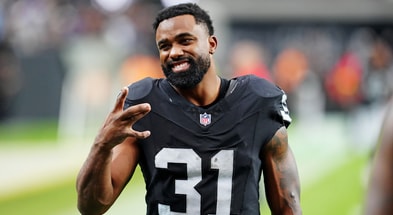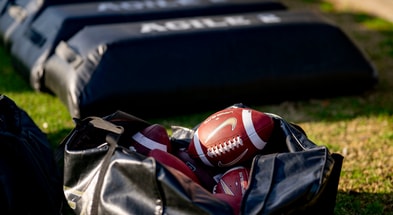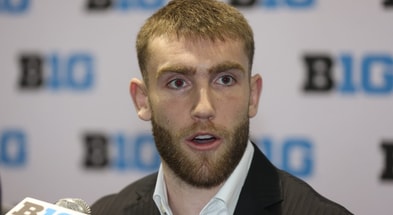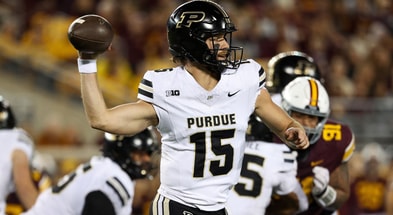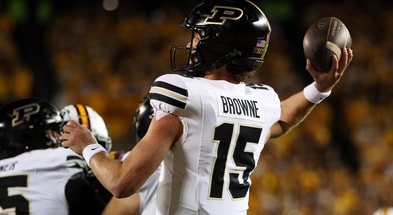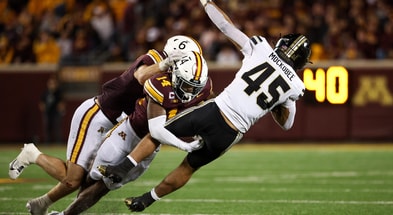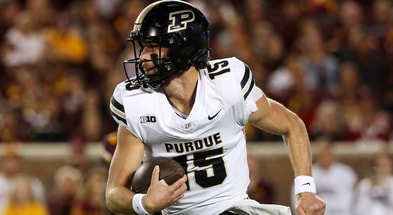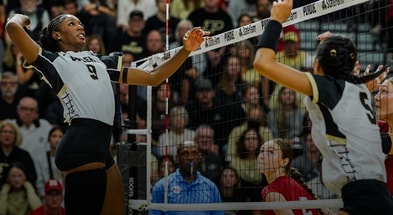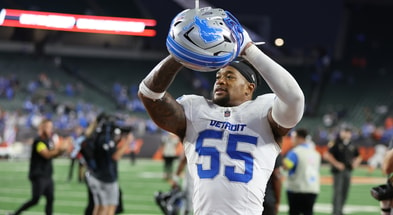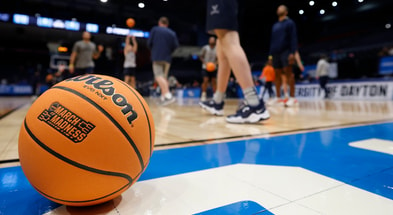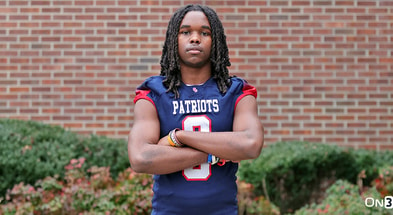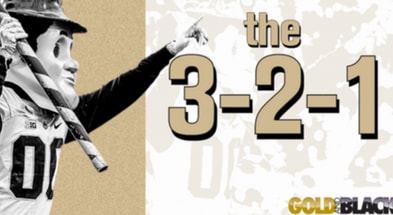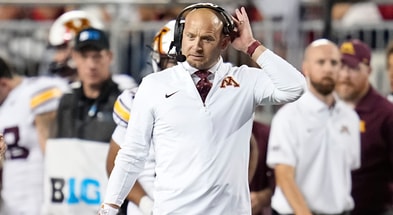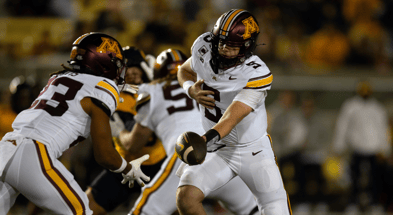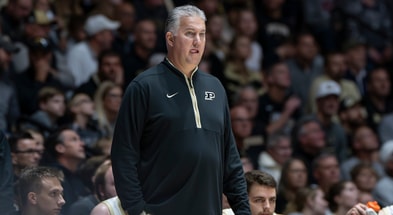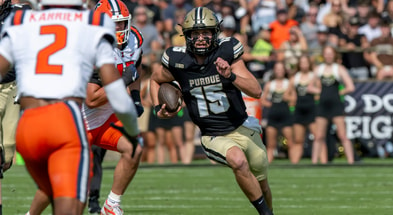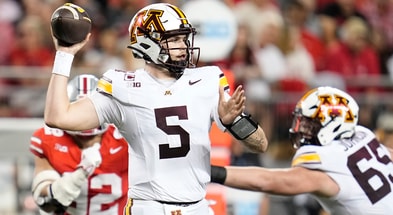Express Word: Purdue basketball, recruiting, Illinois and more

Gold and Black Express’ Weekly Word is the Gold and Black Express weekly opinion column, written by Brian Neubert. In today’s edition, we discuss Purdue football’s public face, basketball and more.
ON PURDUE BASKETBALL AND RECRUITING
This has been one of the strangest recruiting cycles for Purdue I think I’ve seen, as the program’s post-Final Four cachet bump coincided with the money era in recruiting, transfer culture and all sorts of other moving parts.
The goal posts have kept moving in terms of who’s available and who’s not, who’s recruitable and what’s not and what Purdue actually needs. That’s the most important part here.
While Purdue has moved toward what could be another historic season, a few things have happened that you may have noticed if you’re paying close enough attention.

First, an outstanding 2026 team is crystalizing in the backdrop behind this elite 2025 team. Second, Purdue, to keep its place in its sport’s thinnest air, has had to enter the annual portal fray. To repeat: Matt Painter has no aversion to taking transfers, just to building with them. Year-to-year patchwork is going to be necessary, and once one transfer runs his course, you’re often going to have to replace him with another.
So these recruiting cycles, their success or lack thereof hinges in large part of the immediacy of it all. Purdue’s spring was picture perfect. Expecting the same every year is a big ask, but if you think that any high school recruit really matters all that much right now, you are mistaken. Purdue’s shown that time and again for many years now and it’s never been more true.
The most important 2026 recruiting developments that could have happened already have. By getting Omer Mayer last spring and Luke Ertel committed prior to that, the post-Braden Smith Era at point guard, in the best case, is covered for like a half decade.
Right now, Purdue has no seniors slated to be on its 2026 team. It will need to add some on its front line to fill immediate needs in a way few high school players could be expected to.
Purdue is still a developmental operation, but also now in a Catch-22 in that it wants to develop teams over years, but once you’ve reached the mountaintop, you need to do everything you can to stay there as long as possible.
Purdue has been in on some pretty well regarded high school kids that committed elsewhere in the past week. None of those players would have taken the Boilermakers from one level to another immediately, I assure you.
Rankings don’t matter; reality matters. And that’s reality.
ON BIG TEN BASKETBALL, PURDUE AND TRANSFERS
This week, I submitted my preseason All-Big Ten ballots for both the conference’s poll and the media’s — they are two separate things.
I will say this: There are as many transfers and overseas players on my ballot as returning players and I’ll admit that I’m voting mostly on reputation, hearsay and NBA buzz. The only impact transfer I really know is Donovan Dent at UCLA as I took special note of him when he played for New Mexico in the NCAA Tournament. I have good feelings about Bennett Stirtz and Tucker DeVries too for the same reason I felt good about Vlad Goldin at Michigan before last season: They’re playing for the same coaches.
But it’s weird, man. This has been such a continuity league for so long and now I couldn’t name a Rutgers or Penn State player without looking it up and I had to check to make sure John Blackwell was still at Wisconsin. This isn’t just transfer culture, but coaching turnover. Four jobs changed hands this off-season after Michigan, Ohio State (technically) and Penn State turned over last year. Once a coach leaves, the team leaves. Once the team leaves, in come transfers, who thave to be replaced by more transfers. The cycle is unbreakable.
This wasn’t a weird year. This is the new normal and part of what has made this run by Purdue so meaningful. These successful programs with these successful coaches need to be mindful of succession now more than ever. Tom Izzo is 70, Dana Altman 67, Brad Underwood 61, Eric Musselman 60, Matt Painter 55 and Mick Cronin 54.
ON PURDUE FOOTBALL AND ILLINOIS
You’ve got to give Illinois credit. I didn’t think Bret Bielema could reboot a program from scratch given his background with less-than-modern football, but here’s Illinois now, legitimately relevant in a seemingly sustainable way. Bielema’s adapted to the times, hired good people and been able to replace them without drop-off. This isn’t Flintstones offense they’re running, nor is it the trash defense Illinois played for years prior.
Their success, and obviously that of Indiana, remind of the decades-long Game of Thrones that’s been played by the Big Ten’s permanent bottom-middle.
You’ve read it here before: Step 1 for Purdue’s ascension has to start by stepping on the backs of its peers, by beating IU, Illinois, Northwestern and Minnesota more often than not. You can put Rutgers, Maryland and certainly godawful UCLA in there now. That’s how you get to eye level with Iowa, Wisconsin, Michigan State and Nebraska in the Big Ten’s permanent middle.
Top 10
- 1New
Sooners dismiss WR
Brent Venables breaks news
- 2Hot
CFB ratings
Top 10 watched games in 2025
- 3
James Franklin
Inside PSU's decision to fire head coach
- 4Trending
Top 5 CFB coaches
Joel Klatt ranks midseason
- 5
Transfer Portal
New rules after coaching changes
Get the Daily On3 Newsletter in your inbox every morning
By clicking "Subscribe to Newsletter", I agree to On3's Privacy Notice, Terms, and use of my personal information described therein.
Eventually, somebody backslides like Wisconsin is doing right now after making a hire that inexplicably decided to scrap its blueprint for winning. Purdue just did the same thing a few years back.
You’ve got to beat your peers first. It probably doesn’t matter as much in recruiting as it used to, but it really matters in the win-counting department now that this conference is more of a transcontinental corporation than a sports league.
Illinois is again going to be a heavy favorite Saturday, but again, an opportunity to draw blood from its league’s vulnerable midsection.
ON THE BIG TEN AND PRIVATE CAPITAL
According to numerous reports from national writers who obviously all got the same text at the same time, the Big Ten has been discussing the possibility of accepting $2 billion in private capital to distribute to its 18 members, who already are nibbling on a billion-dollar media rights deal and can leverage some of the strongest and monetizeable brands in college sports, many of those brands, by the way, being public universities.
Translation: Ohio State’s saber-rattling over distribution hit its intended audiences and now the Big Ten’s hindquarters is up for auction.
Maybe.
This could all be a facade on someone’s part to leverage somebody for something. Who knows with these people? But there’s no doubt that eventually Ohio State, Michigan, Penn State and Oregon are going to starve to death in the streets before long if someone doesn’t give them some money at someone else’s expense.
In this case, it’s everyone’s expense.
TV already runs the Big Ten.
Now, if you want to maintain any sovereignty, you don’t need Stewy from “Succession” taking up an office in Rosemont as a controlling partner. You go down that road and you end up keeping investors happy, not programs, presidents and dare I say fans. What happens when your partners steer business to their other partners or when what’s best for United Acquisitions LLC Or Whatever The Hell isn’t best for Michigan State or FOX or the entity that started it all, Ro-Tel? What cut is Stewy going to want from that next media deal, the theory around which stuck the Big Ten with a bunch of schools that make no sense.
Suddenly your league has been reshaped by people who don’t have any business reshaping one of sports’ most powerful entities and after the sugar high of that up-front cash runs its course, the bill comes due and all your imagined problems of today become genuine crises for those who come after you. Leave it to college sports people to never miss an opportunity to hold a blade to the golden goose’s throat.
The old Pac-12 died before going this route. Soul-less Florida State talked about this and never did it. Ever wonder why?
I have never faced the hardship of ever having to run a business on a mere $250 million in revenue per year, so I don’t know, but what I do know is this ain’t the answer.
Maybe the Big Ten is floating this to try to bait the SEC into doing it first. But I’m not sure even the SEC is this unnecessarily desperate.
